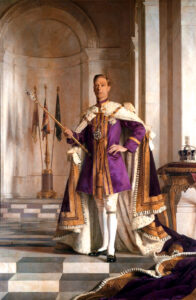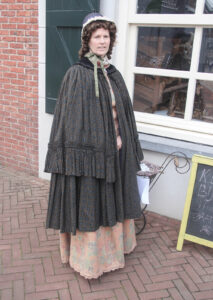A priestly robe was far from his mind! So a mantle is like an extra layer worn on the outside of a robe. It’s like a cape but differs slightly in meaning. In modern English we often just say cape, sometimes a mantle is like a full cape and occasionally it refers to something much smaller than the clothes it covers. Like somewhere between a loose fitting cloak and short jacket.
However, the term means much more than just the item of clothing. Biblically priests and men who had been anointed by God wore it as a symbol of their duty. For hundreds of years, it was a symbol of monastic vows and so had associations with poverty, but had been taken up by the rich particularly the monarchy.
In the time of the Golden Dawn, it would be recognised as a symbol of either ecclesiastical or monarchic authority. The people that wore it, were in a position high up in the church and in England at the time of the Golden Dawn, it was often worn by the kings and queens at official ceremonies who, since Henry VIII, were naturally the head of the church of England.
It is worth noting that expressions such as “the passing of one’s mantle”, “the inheriting of someone’s mantle” and “taking up one’s own mantle” all use the term to refer more to duty and authority than to clothing. A mantle is like a god-given authority, a duty whether given or assumed, an oath bounded destiny … a Will, if you will.
I hope this helps anyone reading Cicero’s Self Initiation into the Golden Dawn.
Here’s a few examples of mantles:



